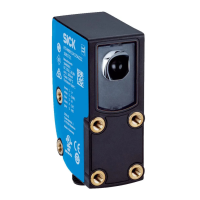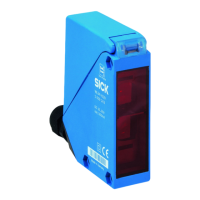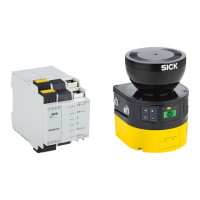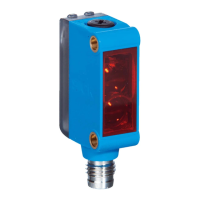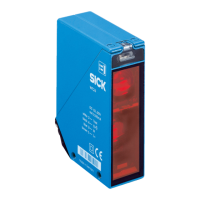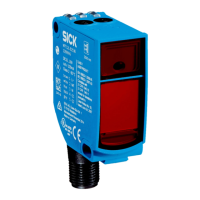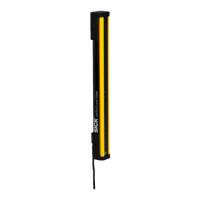Operating Instructions
NAV350
Product description
8013889/ZML0/2017-06-09
© SICK AG · Germany · All rights reserved · Subject to change without notice 25
Chapter 3
Initial positioning
After the transition from another operating mode (e.g. stand-by) to the N
AVIGATION operating
mode, the NAV350 calculates and identifies the reflector positions by making a pattern
comparison between the measured reflectors and the saved reflector positions in the cur-
rent layer. Requirements for successful initial positioning are:
• The vehicle is not moving.
• There are at least three reflectors in the field of view of the NAV350.
Depending on the number of measured reflectors and number of reflectors in the current
layer, initial positioning can take several seconds.
If the last position is still known, using the software telegram
SMN MNPOSSETPOSE the vehi-
cle computer can directly activate continuous positioning from a defined position and in this
way restore the contact to the layer.
Continuous positioning
After successful initial positioning the NAV350 automatically changes to the continuous po-
sitioning operational status. Here the computationally intensive pattern comparison of the
initial positioning is not required. The NAV350can supply new position data with a repetition
rate of approx. 8 Hz.
During continuous positioning the NAV350 has an expectation as to the approximate posi-
tion of the reflectors (see fig. 11). For this purpose the NAV350 places a detection window
with a configurable radius r (factory setting 300 mm (11.81 in)) around each reflector coor-
dinate.
Fig. 11: Identification of reflectors in the operational status “continuous positioning”
Reflectors are measured within the identification window. The relevant reflectors are used
to calculate the position by means of the adaptive selection. By configuring larger detection
windows, the NAV350 can be optimised for instance for very dynamic AGV velocity changes,
by reducing the size of the windows for extreme conditions due to misreflections.
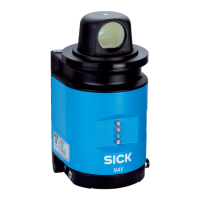
